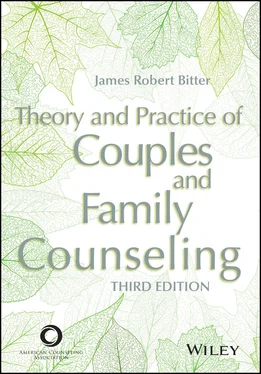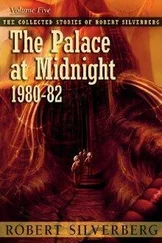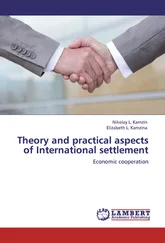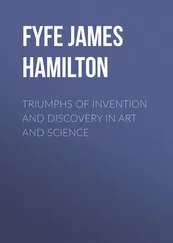James Robert Bitter - Theory and Practice of Couples and Family Counseling
Здесь есть возможность читать онлайн «James Robert Bitter - Theory and Practice of Couples and Family Counseling» — ознакомительный отрывок электронной книги совершенно бесплатно, а после прочтения отрывка купить полную версию. В некоторых случаях можно слушать аудио, скачать через торрент в формате fb2 и присутствует краткое содержание. Жанр: unrecognised, на английском языке. Описание произведения, (предисловие) а так же отзывы посетителей доступны на портале библиотеки ЛибКат.
- Название:Theory and Practice of Couples and Family Counseling
- Автор:
- Жанр:
- Год:неизвестен
- ISBN:нет данных
- Рейтинг книги:5 / 5. Голосов: 1
-
Избранное:Добавить в избранное
- Отзывы:
-
Ваша оценка:
- 100
- 1
- 2
- 3
- 4
- 5
Theory and Practice of Couples and Family Counseling: краткое содержание, описание и аннотация
Предлагаем к чтению аннотацию, описание, краткое содержание или предисловие (зависит от того, что написал сам автор книги «Theory and Practice of Couples and Family Counseling»). Если вы не нашли необходимую информацию о книге — напишите в комментариях, мы постараемся отыскать её.
Theory and Practice of Couples and Family Counseling — читать онлайн ознакомительный отрывок
Ниже представлен текст книги, разбитый по страницам. Система сохранения места последней прочитанной страницы, позволяет с удобством читать онлайн бесплатно книгу «Theory and Practice of Couples and Family Counseling», без необходимости каждый раз заново искать на чём Вы остановились. Поставьте закладку, и сможете в любой момент перейти на страницу, на которой закончили чтение.
Интервал:
Закладка:
Object Relations Family Counseling
Key figures: David and Jill Scharff, Nathan Ackerman, Ivan Boszormenyi-Nagy, Mary-Joan Gerson, Peggy Papp, Samuel SlippThe theory chapters start with the systemic approach of object relations therapists. Beginning with Sigmund Freud’s original drive/structure psychology, multiple scientist-practitioners began in the late 1920s and 1930s to investigate actual children and the nature of their relationships with significant caregivers. Many of these investigations were initiated in England, and the theorists came to be known as object relations practitioners. David and Jill Scharff developed object relations family therapy more fully using emotional tracking and an analysis of transference and countertransference to uncover unconscious processes within the family.
Adlerian Family Counseling
Key figures: Alfred Adler, Rudolf Dreikurs, Oscar Christensen, Len Sperry, Jon Carlson, Paul Peluso, Bill Nicoll, Jim BitterAdler was the first practitioner-theorist to speak of social embeddedness, family atmosphere, family interactions, the family constellation, and birth order, and he was the first psychologist to engage in family practice and interventions. His initial work with families and communities was systematized and expanded by Rudolf Dreikurs, who was, during his lifetime, the most prominent of Adlerian practitioners in the United States. Adler’s focus represented a huge paradigm shift in the development of psychodynamic theories, just as the general field of family counseling and practice would be another paradigm shift away from a focus on private, individual work.
Bowen and Multigenerational Family Counseling
Key figures: Murray Bowen, Betty Carter, Thomas Fogarty, Phillip Guerin, Michael Kerr, Monica McGoldrickSixty years ago, the models that would become the foundation for the field of marriage and family therapy began to emerge. These models included the multigenerational approach taken by Murray Bowen with his emphasis on differentiation of self, the problems of triangulation, and the passing of problems from one generation to the next. Murray Bowen also emphasized that the personal development and the professional development of the therapist were linked and were essential to the practice of family therapy.
Satir and the Human Validation Process Model
Key figures: Virginia Satir, John Banmen, Jean McLendon, Maria Gomori, Jane Gerber, Sharon LoeschenPerhaps no family practitioner emphasized the use of self in therapy more than Virginia Satir. A pioneer in the field of family therapy, Satir brought her background as a clinical social worker to her understanding of family process. She emphasized self-esteem and communication as avenues for understanding and intervening in family dynamics, and she provided us with a process for change that included human contact, touch, caring, and nurturance.
Whitaker and Symbolic-Experiential Family Counseling
Key figures: Carl Whitaker, David Keith, Thomas Malone, Gus NapierAlthough Satir was highly experiential in her approach, it was really Carl Whitaker who introduced the symbolic (with all of its existential meaning) to experiential counseling with families. Whitaker gave a whole new meaning to the process of coaching in family counseling. He stretched the boundaries of creativity and innovation when he danced with families. Whitaker often provoked anxiety in an effort to promote change. He also demonstrated the value of working with cotherapists in family sessions. A chapter on this method is available at www.jamesrobertbitter.com.
Minuchin and Structural Family Counseling
Key figures: Salvador Minuchin, Harry Aponte, Jorge Colapinto, Charles Fishman, Patricia MinuchinOne of the family practitioners who both influenced and was influenced by Carl Whitaker was the great master of structural family therapy Salvador Minuchin. Minuchin helped the field of family counseling understand the organization of families through the sequences of interactions and the boundaries (or lack of them) that existed between subsystems. Using joining, reframing, and enactment, Minuchin and his followers provided the early foundation for systemic work with families, especially poor families.
Strategic Family Counseling
Key figures: Jay Haley, Cloe Madanes, Mara Selvini Palazzoli, Paul Watzlawick, John WeaklandBy the 1980s, Minuchin’s work was often integrated with the problem-solution focus of the strategic therapists. Strategic therapists focused on the possibilities for change in systems that they understood to be hierarchies of power and function. Many of these practitioners were influenced by the theories and systemic thinking of Gregory Bateson as well as the indirect messages and trance work of Milton H. Erickson. This was especially true of Jay Haley and the practitioners at the Mental Research Institute in Palo Alto, California, where a focus on brief family therapy was first introduced. In turn, strategic therapists in the United States would also influence the strategic model in Milan, Italy, where Mara Selvini Palazzoli and her associates would focus on paradox, counterparadox, and circular (or relational) questioning.
The Postmodern Transition
By the 1990s, the field of family counseling itself had begun to experience a paradigm shift. Most of the approaches mentioned earlier fell into what we would now call a modernist perspective, in that they all searched for the essence of what makes up family process and sought to change the family in more functional and useful ways. The postmodern perspective challenged the idea of essences and a true knowing of the family system, suggesting that knowing a family depends as much on the perspective of the knower as the family. Thus, if we were to replace any family practitioner with any other family practitioner, a whole new understanding of the family would emerge. If there are multiple therapists working with a family, there are multiple perspectives on both understanding and helping the family. In this sense, most postmodern practitioners adopt a collaborative, social constructionist approach to family counseling. They believe that families are literally coconstructed in the language, stories, and processes that make up their lives and even in the process of counseling itself. Today the heart of social constructionist approaches to family counseling comes in the form of challenging dominant cultural and social positions and taking a stand against the ways in which such dominance constricts and restricts individuals, couples, and families.
Solution-Focused and Solution-Oriented (Possibility) Counseling
Key figures: Insoo Kim Berg, Steve de Shazer, Eve Lipchick, Bill O’Hanlon, Jane Peller, John Walter, Michele Weiner-DavisThe bridge between modern and postmodern family therapies is really in the solution-focused and solution-oriented therapies of Steve de Shazer/Insoo Kim Berg and Bill O’Hanlon/Michele Weiner-Davis, respectively. Growing out of and away from the strategic family therapy models, the solution approaches joined the postmodern movement and developed questions of difference (including exception questions, the miracle question, and scaling questions) to orient clients toward preferred solutions.
Postmodern, Social Constructionist, and Narrative Approaches to Family Counseling
Key figures: Tom Andersen, Harlene Anderson, David Epston, Kenneth Gergen, Harold Goolishian, Stephen Madigan, Michael WhiteThese models that ushered in the postmodern era in family counseling— narrative approaches to family counseling—were first introduced Down Under when Michael White and David Epston began to think of families as living out narratives often imposed on the system. Using externalization, unique events, and reauthoring interventions, narrative therapists seek to separate clients from problem-saturated stories and to cocreate stories of competence and capabilities. Counselors who use postmodern, social constructionist approaches often adopt what Harlene Anderson and Harold Goolishian called a decentered or not-knowing position characterized by interest, curiosity, and inquiries about the next most interesting development. Reflecting teams are used in each of these models to add diverse, multiple voices and perspectives to the process of counseling. Tom Andersen from Norway was the first to design reflecting teams. The purpose of the reflecting team is to provide an audience for counseling that will respond from multiple perspectives and give families many different lenses from which to view their struggles and successes.
Читать дальшеИнтервал:
Закладка:
Похожие книги на «Theory and Practice of Couples and Family Counseling»
Представляем Вашему вниманию похожие книги на «Theory and Practice of Couples and Family Counseling» списком для выбора. Мы отобрали схожую по названию и смыслу литературу в надежде предоставить читателям больше вариантов отыскать новые, интересные, ещё непрочитанные произведения.
Обсуждение, отзывы о книге «Theory and Practice of Couples and Family Counseling» и просто собственные мнения читателей. Оставьте ваши комментарии, напишите, что Вы думаете о произведении, его смысле или главных героях. Укажите что конкретно понравилось, а что нет, и почему Вы так считаете.












